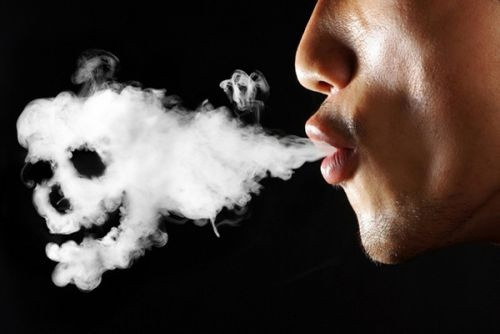Definisi
Alcohol withdrawal syndrome (AWS) adalah gejala yang timbul setelah penghentian konsumsi alkohol secara tiba-tiba setelah konsumsi jangka panjang.
Jika Anda telah mengonsumsi alkohol dalam jumlah banyak selama beberapa minggu hingga tahun, Anda dapat mengalami gangguan kondisi mental dan fisik jika menghentikan konsumsi alkohol tersebut secara tiba-tiba. Gejala bervariasi dari yang ringan hingga berat, yaitu berupa kecemasan ringan, muntah, hingga halusinasi dan kejang. AWS dapat mengancam nyawa.
Penyebab
Konsumsi alkohol berlebih dapat mengiritasi sistem saraf. Jika Anda mengonsumsi alkohol setiap hari, Anda dapat mengalami ketergantungan setelah beberapa waktu. Ketika ketergantungan tersebut terjadi, sistem saraf Anda tidak dapat beradaptasi dengan cepat terhadap penurunan dosis alkohol yang Anda minum. Hal ini menyebabkan gejala-gejala dari AWS.
Faktor Risiko
Faktor yang dapat meningkatkan risiko terjadinya AWS adalah:
- Usia di atas 30 tahun
- Riwayat AWS sebelumnya
- Mengalami ketergantungan terhadap alkohol
- Mengonsumsi alkohol setiap hari dalam jumlah banyak (didefinisikan sebagai 8 gelas alkohol/minggu untuk perempuan dan 15 gelas alkohol/minggu untuk laki-laki)
- Tidak dapat menurunkan jumlah alkohol secara progresif
Gejala
Gejala dari AWS dapat dikelompokkan berdasarkan durasi pasca konsumsi alkohol terakhir. Gejala-gejala ini dapat juga muncul setelah beberapa hari menghentikan konsumsi alkohol. Gejala tersebut meliputi:
6 jam setelah konsumsi alkohol terakhir
- Kecemasan ringan
- Tangan bergetar
- Nyeri kepala
- Mual
- Muntah
- Sulit tidur (insomnia)
- Keringat berlebih
- Tidak dapat berpikir jernih
- Mimpi buruk
- Mood swing
- Mudah tersinggung
- Kelelahan
12-48 jam setelah konsumsi alkohol terakhir
Pada periode ini, gejala yang lebih berat muncul seperti halusinasi dan kejang. Anda dapat mendengarkan, merasakan, atau melihat hal-hal yang sebenarnya tidak ada.
48-72 jam setelah konsumsi alkohol terakhir
Delirium Tremens (DT) dapat muncul pada waktu 48-72 jam setelah konsumsi alkohol terakhir. Gejala berat ini meliputi halusinasi dan delusi (tidak dapat membedakan kenyataan dan imajinasi). Selain itu gejala lain yang muncul adalah:
- Rasa bingung
- Jantung berdebar keras
- Tekanan darah tinggi
- Demam
- Berkeringat banyak
- Agitasi atau tidak dapat tenang
Gejala dari AWS dapat berlangsung selama 5-7 hari.
Diagnosis
Jika dokter menduga Anda mengalami AWS, dokter akan menanyakan mengenai riwayat konsumsi alkohol Anda dan riwayat kejadian yang sama sebelumnya. Dokter juga akan menanyakan mengenai keluhan utama Anda dan pengobatan yang telah Anda lakukan. Dokter dapat melakukan pemeriksaan darah, pemeriksaan urin, pemeriksaan toksikologi (untuk memeriksa zat tertentu di dalam tubuh Anda), dan pemeriksaan pencitraan. Pemeriksaan fisik yang dilakukan dokter antara lain:
- Pergerakan bola mata
- Ritme jantung
- Tanda dehidrasi
- Demam
- Frekuensi napas cepat
- Tangan bergetar
Tatalaksana
Tujuan dari pengobatan AWS antara lain:
- Mengurangi gejala putus zat
- Mencegah komplikasi dari penggunaan alkohol
- Melakukan terapi untuk membantu Anda berhenti mengonsumsi alkohol
Pasien yang mengalami gejala sedang-berat dari AWS membutuhkan perawatan di rumah sakit untuk mengatasi gejala. Mereka membutuhkan pengawasan ketat berkaitan dengan halusinasi dan gejala dari delirium tremens. Pengobatan yang dilakukan adalah:
- Pemantauan tekanan darah, suhu tubuh, ritme jantung, dan pemeriksaan kadar zat kimia di dalam tubuh
- Mengganti cairan menggunakan infus
- Suplementasi nutrisi
- Menggunakan obat-obatan sedatif hingga fase putus zat selesai
- Perawatan di lokasi yang tenang dan protektif
Pasien yang mengalami gejala ringan-sedang dari AWS dapat dirawat jalan. Selama proses ini, pasien membutuhkan seseorang untuk menjaga dan mengawasi selama beberapa waktu. Pasien juga perlu mengunjungi dokter secara berkala untuk memastikan bahwa tidak ada gejala tambahan yang serius.
Pengobatan yang dilakukan antara lain:
- Memberikan obat-obatan sedatif untuk membantu meringankan gejala putus zat. Konsumsi obat-obatan ini memerlukan pengawasan ketat karena dapat menyebabkan ketergantungan
- Konsumsi vitamin untuk mengganti vitamin esensial yang hilang. Konsultasikan hal ini dengan dokter Anda
- Pemeriksaan darah berkala
- Mengadakan diskusi dengan teman dan keluarga terdekat untuk rencana mengurangi kebiasaan konsumsi alkohol
- Pemeriksaan dan penanganan lebih lanjut yang berkaitan dengan penggunaan alkohol berlebihan
Orang terdekat yang dapat mendampingi dan mengawasi Anda selama proses ini sangat diperlukan. Beberapa area menyediakan lokasi rehabilitasi alkohol untuk membantu seseorang tetap abstinens.
Penghentian konsumsi alkohol jangka panjang dan seumur hidup merupakan pengobatan definitif dari AWS.
Komplikasi
Seberapa baik luaran seseorang dengan AWS bergantung pada seluas apa kerusakan yang terjadi dan organ apa yang terlibat serta apakah seseorang dapat berhenti mengonsumsi alkohol.
Komplikasi dari AWS antara lain:
- Komplikasi yang ringan, meliputi insomnia, kecemasan ringan, nyeri perut, anoreksia, nyeri kepala, berkeringat, berdebar. Hal ini dapat berlangsung beberapa bulan setelah AWS terjadi
- Kejang dalam 12-48 jam setelah konsumsi alkohol terakhir
- Halusinasi (12-24 jam setelah konsumsi alkohol terakhir)
- Delirium Tremens (DT), yaitu kondisi halusinasi, kebingungan, jantung berdebar, tekanan darah tinggi, dan suhu tubuh tinggi setelah penghentian alkohol
- Jika seseorang tidak dapat menghentikan konsumsi alkohol, maka dapat terjadi kerusakan hati, jantung, dan sistem saraf
Pencegahan
Cara paling efektif untuk mencegah AWS adalah dengan menghindari konsumsi minuman beralkohol atau minum dalam jumlah terkontrol.
Konsumsi alkohol yang terkontrol didefinisikan sebagai konsumsi kurang dari 1 gelas per hari untuk perempuan dan kurang dari 2 gelas per hari untuk pria. Ukuran gelas yang digunakan yaitu sekitar 240-280 ml. Namun, jika seseorang telah mengalami penyalahgunaan alkohol, AWS dapat dicegah dengan menurunkan konsumsi alkohol di bawah pengawasan dokter.
Kapan harus ke dokter?
AWS merupakan kondisi yang dapat mengancam jiwa. Segera hubungi fasilitas kesehatan terdekat jika Anda mengalami gejala-gejala dari AWS, terutama jika Anda baru saja mengurangi jumlah alkohol yang biasa Anda minum. Jika Anda mengalami kejang, demam, kebingungan, halusinasi, atau detak jantung yang tidak teratur, segera kunjungi IGD. Berikan informasi mengenai riwayat konsumsi alkohol Anda pada tenaga kesehatan agar dapat segera melakukan tindakan lebih lanjut.
- dr Ayu Munawaroh, MKK
MedlinePlus (2021). Alcohol withdrawal. Available from: https://medlineplus.gov/ency/article/000764.htm
Balingit A. (2021). Alcohol withdrawal syndrome: symptoms, causes, treatment, and more. Healthline. Available from: https://www.healthline.com/health/alcoholism/withdrawal
Hoffman RS. (2022). Management of moderate and severe alcohol withdrawal syndromes. UpToDate. Available from: https://www.uptodate.com/contents/management-of-moderate-and-severe-alcohol-withdrawal-syndromes#H15
Marcin J. (2018). Signs of alcohol withdrawal syndrome. MedicalNewsToday. Available from: https://www.medicalnewstoday.com/articles/322373#alcohol-withdrawal-syndrome-vs-a-hangover






/62d244a608bfb.jpg)





